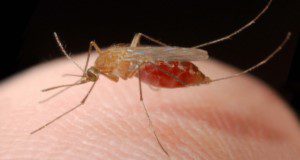The Prevent & Protect publication series focuses on the creation of different material formats to resonate with various audiences and ways to maximize their efficacy in communicating risk to the public about mosquito control. This new 4-page publication of the UF/IFAS Department of Agricultural Education and Communication explains how to engage in effective crisis communication and how to effectively use the Prevent & Protect emergency toolkit in a mosquito-related crisis situation. Written by Ashley Mcleod-Morin, Ricky Telg, Phillip Stokes, Alena Poulin, Shelli Rampold, Angela B. Lindsey, and Sandra Anderson.
https://edis.ifas.ufl.edu/wc363
Tag: Angela B. Lindsey
Understanding Public Perceptions of Mosquito-Related Information Sources and Adapting Research Findings to the Needs of Industry Professionals
The Prevent & Protect publication series focuses on the creation of different material formats to resonate with various audiences and ways to maximize their efficacy in communicating risk to the public about mosquito control. The overview of the Prevent & Protect project, developed by the UF/IFAS Center for Public Issues Education in Agriculture and Natural Resources (PIE Center), can be found in EDIS publication AEC694/WC357, Public Perceptions of Mosquitoes and Mosquito Control. This new 3-page document describes the importance of understanding and adapting to public perceptions of information sources and how scientists can adapt their research findings based upon the needs of professionals in the field to create usable outreach materials. Written by Shelli Rampold, Ricky Telg, Alena Poulin, Sandra Anderson, Angela B. Lindsey, Ashley McLeod-Morin, and Phillip Stokes, and published by the UF/IFAS Department of Agricultural Education and Communication.
https://edis.ifas.ufl.edu/wc358
Developing and Managing a Community Outreach and Dissemination (COD) Core for a Multi-Institution Grant Project
This 3-page document is one in the Healthy Gulf, Healthy Communities series, which focuses on research studying the physiological, psychological, and sociological effects of the 2010 Deepwater Horizon oil spill in order to help communities recover and prepare for future potential disasters. Written by Angela B. Lindsay, Nadia Bahadori, and Samantha Goldenberg and published by the UF/IFAS Department of Agricultural Education and Communication, December 2018.
http://edis.ifas.ufl.edu/wc320
Engaging and Empowering Community Resource Organizations (CROs) Before, During, and After Disasters
This 3-page document is one in the Healthy Gulf, Healthy Communities series, which focuses on research studying the physiological, psychological, and sociological effects of the 2010 Deepwater Horizon oil spill in order to help communities recover and prepare for future potential disasters. Written by Angela B. Lindsey and Samantha Goldenberg and published by the UF/IFAS Department of Agricultural Education and Communication, December 2018.
http://edis.ifas.ufl.edu/wc319
Developing and Strengthening Networks to Promote Resilience After Disasters
The HGHC series includes thirteen publications that focus on the work of the community outreach and dissemination team, including community engagement, outreach, and research result dissemination. This 3-page document focuses on developing and strengthening networks before they are challenged to promote resilience in and after a disaster. Written by Angela B. Lindsey, Samantha Goldenberg, and Cassie Wandersee, and published by the UF/IFAS Department of Family, Youth and Community Sciences, April 2018.
http://edis.ifas.ufl.edu/fy1477




